[In a sign of the real-world, 1st world problems we deal with here at Far Out City, my camera plunkered out the morning of this day trip. Until I can get out there again, I’ll be using recycled photos from previous excursions. Bear with me.]
A little known fact outside the Bay Area, is that San Francisco is cold. Last year, there were only four 80-degree days here. FOUR. (On a related note, this is why you should never pack shorts or skirts when vacationing here.)
SO, when you wake up on a Saturday, and it’s miraculously 82 degrees outside…well, you owe it to yourself to head to the beach. No matter how many errands you planned on accomplishing, no matter if the UT game is being televised.
We decided to head to Lands End and delve into its past as the place to be in the 1940s. This day trip takes you from Louis’ Restaurant to Lands End Point overlooking the Pacific Ocean and Golden Gate Bridge, back through the Sutro Baths and out to Ocean Beach. Wrap all this day up with a blanket and sunset, and you have yourself one awesome late summer day.
On Foot: Day hike through Lands End and Ocean Beach
Recommended Itinerary: (3 hiking miles, 2 beach walking miles, 9 hours)
1. Get yourself to the Outer Richmond
2. Breakfast at Louis’ Restaurant
3. Hike Lands End, starting with the USS San Francisco Memorial
4. Step down onto Lands End Point
5. Turn around and head back to the Cliff House
6. Teeter totter around the Sutro Baths ruins
7. Scamper across mussel-covered rocks to Ocean Beach
8. Walk along Ocean Beach and find a place to settle in
9. Prepare for dinner and a sunset
10. Head home
What you’ll need to bring:
1. Lots of layers, particularly if it’s not one of the four warm days this year
2. Sneakers
3. A tarp or beach blanket
4. Another blanket for a chilly sunset
5. A functioning camera
1. Get yourself to the Outer Richmond
I’m not gonna lie, if you don’t live in the Richmond District, getting to the Outer Richmond is a bit of a hike. We chose to take the 38 Geary all the way to the end of the line, but driving or even taking a taxi ($20-30) are wholly appropriate. There is plenty of parking all around the Cliff House. Just make sure to get there early if it’s a nice day. If you’d rather not worry about parking and would like to save some cash, see here for how to take the MUNI bus.
Stepping off the bus, you’ll see the quiet Point Lobos Ave ease down before it takes a sharp left turn, leaving the rocky Pacific coastline in its wake. There are only two incongruous buildings: the boxy and brown Louis’ Restaurant and the glittering white neoclassical Cliff House. The cliff to your right, lined in flat-topped Cyprus trees, drops into…a vat of seaside muck and concrete. Other than the ocean, there’s not much to see.
Louis’ Restaurant, also once called Louis’ Sandwich Shop, opened in 1937, when this area would have been a bustling waterfront attraction. Three trolley lines ambled down Fulton Street and another down Clement. The transit lines, in an attempt to attract weekend riders, worked with developers to build restaurants, dance halls, and amusement parks all along Ocean Beach.
In the 1940s, you would have taken the 2 Clement to its terminal station right here. Stepping out of the streetcar terminal, you would have immediately come upon the Grecian entrance to Sutro Baths, with Louis’ Restaurant next door. Further down the hill would have been more restaurants, mostly owned by Greeks, down to a Curio Shop, then the Cliff House (which had just reopened in 1938 following Prohibition). Down the hill was Topsy’s Roost, a chicken coop themed restaurant and nightclub, where people sat in cubicle-like “chicken coops” and slid down chutes onto the dance floor. (I’m not making this up: photo.) It later became the Family Dog, which the Grateful Dead and Jefferson Airplane played in 1969.
The main draw, though, was Playland-at-the-Beach — a roller coaster and merry-go-round amusement park on Great Highway just next door to Skateland.
With the outbreak of WWII and San Francisco’s role as the United States’ western front and training ground, the area was a favorite haunt of sailors and soldiers on leave from the Presidio and other nearby military forts. Even though coastal blackout orders were in effect, proprietors got around the regulations by putting hoods on streetlamps and painting the buildings dark grey.
2. Breakfast at Louis’ Restaurant
Louis’ Restaurant survived the eventual decay and fires that took all the surrounding attractions. First, the streetcar terminal burned down in 1949. In 1966, while being converted to condos, the Sutro Baths also burned down. In 1971 and 1972, Playland was dismantled to make room for condos. It even survived a federal parkland buyout in 1977.
Louis’ Restaurant is the little restaurant that could.
Perched on a cliff, the first thing you’ll notice are the table-to-ceiling windows with ocean views. Diner booths line the periphery of the restaurant.
The food is straightforward and well-prepared diner food, somewhat of a rarity in this part of the country. I had scrambled eggs with cheese and potatoes. Dave had an omelet. This is exactly the kind of food I want before a Saturday morning hike.
Of course, if there are folks in your group who want something a touch more upscale, there is the Cliff House just down the road. The Bistro is all marble, glass, and shiny brass fixtures with endless ocean views. I’m not sure the food is actually better, but you can have Dungeness crab with your eggs and a dollop of goat cheese. It is a tourist destination, so you may have to wait a while for a table and breakfast entrees are pricey at $13-20 a plate.
3. Hike Lands End, starting with the USS San Francisco Memorial
After breakfast, head out to Merrie Way, the paved pathway that rings the Sutro Baths pit. Walk past the port-o-potties and parking lot into the grove of cypress trees.
As you’ll soon realize, this is barely hiking. The path is flat, paved, and wide, a relic from when a streetcar line shuttled people through here and out to a café at the point. It is really a wonderful walk, though, and almost every person we passed had a huge grin on their face as they gazed between trees out to the ocean.
We came upon the grand, white steps leading up to the USS San Francisco Memorial and moseyed up. The memorial consists of the USS San Francisco’s damaged bridge wings, with steps leading to a central flag pole and plaques commemorating the cruiser’s victory at the Battle of Guadalcanal and the ship’s crew.
The story of the USS San Francisco, and World War II generally, is very much the story of Rear Admiral Bruce McCandless. McCandless was born in Washington, DC in 1911, the son of Byron McCandless, a Navy officer who served in WWI and WWII and eventually earned the rank of Commodore.
In September 1939, when McCandless was 28, a husband of 3 years, a father of a 2 yr old son, and a fresh post-graduate from the US Naval Academy in Anapolis, WWII exploded on the scene in Western Europe. McCandless was ordered to the USS San Francisco, patrolling the Atlantic for hostile British or German movements as part of President Roosevelt’s Neutrality Patrol. Five months later, the USS San Francisco was ordered to the Pacific front and spent the next year and half cruising between Pearl Harbor, Puget Sound, and Long Beach.
The USS San Francisco was in dry dock at Pearl Harbor the morning of December 7, 1941. It didn’t have any ammunition onboard and or even fuel for that matter. Its crew was just waking up and having breakfast, when sailors in line at the mess hall started complaining about the aviators “disturbing our peaceful Sunday morning with practice dive bombing.” The USS San Francisco crew were immediately dispatched to other ships, since their own ship was useless in the battle. Later, in true Greatest Generation style, the USS San Francisco crew brushed off the attack on their own ship, saying that it was clear that the Japanese bombers were after the battleships, and not really after them.
For the next 8 months, the USS San Francisco ran as a protective convoy, shuttling infantry and supplies to the South Pacific. Japan had pogo-sticked around the Pacific islands and, in August 1942, had begun construction of an airfield in Guadalcanal (aka the Solomon Islands), an island group just northeast of Australia. Around 2pm in the afternoon on November 12, 1942, while providing ground cover for troops at Guadalcanal, the USS San Francisco saw Japanese torpedo jets zoom overhead. A battle broke out. The USS McCauley nearby fired on a torpedo jet, sending it crashing onto the USS San Francisco in a ball of flames. The jet sheared off the rear control station, and killed 35 men before rolling off the tower and into the ocean.
The battle resumed later that night, or early the next morning, at around 1am. The moon had set and the sky above the Pacific was overcast. The American fleet had seen the Japanese fleet coming from afar, but Rear Admiral Callaghan had them hold fire, letting the Japanese vessels come closer. Twenty minutes later, and for the next hour, they were in full attack. The USS San Francisco was positioned between two groups of Japanese ships, taking hits from both sides. Lieutenant Commander McCandless, as the ship’s communications officer, was in the navigation bridge, taking orders from Rear Admiral Callaghan and directing the ship’s movements. His captain, Captain Cassin Young, had been in the conning tower, but left his position when visibility became too poor. He eventually joined Lieutenant Commander McCandless in the navigation bridge.
The radio tower had just been hit, killing the radiomen, when the navigation bridge itself was hit. Captain Young, standing next to McCandless, was killed instantly. Soon after, a girder fell onto the navigation bridge followed by another barrage of fire. Rear Admiral Callaghan and every other officer on the bridge were instantly killed, in addition to all personnel in the communication station. The ship had lost all radio control. With only one enlisted man to help him, McCandless fought through his own shrapnel wounds and shock to take control of the ship and steer it to safety. The USS San Francisco had been hit 45 times and its crew was fighting 22 different fires in the armory, hangar, communication platform, chart house, captain’s office, captain’s cabin, CPO quarters, navigator’s office, and officer’s galley. It had lost all external communications; its steering and engine control was intermittent as the crew relied on backup controls, and then the backup to the backup controls.
And —get this–while steering, McCandless realized that he had moved too far south, and turned the ship around to reengage the enemy.
Senior officer Liuetenant Commander Schonland made it to the bridge and took over control of the ship. While Schonland headed back under to help with flooding, McCandless and the USS San Francisco continued to trade fire with the Japanese battleships, before finally slipping east out of harm’s way.
A month later in December 1942, the USS San Francisco pulled into the Golden Gate, right past Lands End to a hero’s welcome. In a ceremony on the deck of the USS San Francisco, Admiral Earnest J. King presented now-Commander McCandless with a Medal of Honor bestowed by President Roosevelt. The mayor of San Francisco threw a parade for all the crewmen, and presented all of them with citations and free passes to movies and sporting events.
I kind of also like to think that maybe they hopped on the 2 Clement down to the Cliff House, trading battle stories with other shipmen, soldiers, and wide-eyed new recruits. All before howling it up at Topsy’s Roost.
Commander McCandless continued fighting aboard the USS San Francisco and later the USS Gregory, surviving kamikaze attacks and earning a Silver Star and a Purple Heart.
Oh, and not to be outdone, that little 2 year old boy that Commander McCandless left behind to fight on the Pacific front? He grew up to be a NASA Astronaut, logging over 300 hours in space – Captain Bruce McCandless II. Not too shabby a family, huh?
Walking around the ship’s bridge wings and gaping at the 12-inch wounds, we tried to take all of this in. Other folks also took a break from their family outings to gather around the memorial too, solemnly reading names and doing what we feel is appropriate to honor our heroes at these memorials, when it is both possible and completely impossible to imagine one dark night on this same sea, thousands of miles away in the South Pacific.
Descend the stairs and continue heading north on the Coastal Trail. The path remains easy to traverse until you get near the bend, when it turns into a dirt path. If you can, I highly recommend continuing on – the best is yet to come.
4. Step down onto Lands End Point
The steps down to Lands End Point will be on your left and covered in foliage; once you’re descending, keep right. The greenery wraps around the rocky stairwell in a tunnel, but you’ll have steady glimpses of the green cliffs and ocean as you continue along. (Photo above is from Baker Beach, but that’s the general idea.)
Lands End Point juts out between the ocean to your left and the Golden Gate channel to your right. The view of the Golden Gate Bridge is fantastic, in addition to Baker Beach, the Presidio, and Sea Cliff. My head was on a swivel trying to take it all in. Someone had laid down a zen meditation maze right at the point, and every now and then, someone would half-jokingly try to traverse it.
Climbing back up the steps is a bit of a challenge, but I still recommend continuing walking north on the Coastal Trail. The terrain becomes a bit more unstable and you’ll feel a bit more like you’re actually hiking. The views continue to be outstanding, but the real joy is walking through the Eucalyptus groves, their sweet scent mixing with the salty sea air.
At the end of the path, you’ll come to another point overlooking the Golden Gate Bridge, with a large wooden deck and benches to sit on. It is such a perfect spot to sit and take it all in.
5. Turn around and head back towards Louis’ Restaurant
I know, I know – quite poor day trip planning to have you retrace your steps. But, this walk is so dramatically beautiful, and not actually that long of a walk, that I think it’s the way to go. (You can alternatively venture into the Sea Cliff neighborhood and walk along Clement Street back to the Cliff House, to get a taste of the neighborhood here.)
Walking in this direction, with a gentle downhill slope, you’ll practically never lose sight of the ocean.
As you approach Merrie Way, take a right to sidewind through the Cyprus tree grove. This path will lead you down into the Sutro Bath ruins.
6. Teeter totter around the Sutro Bath ruins
Given their condition, you’d think the ruins were hundreds of years old. The Minoan ruins in Crete look more intact than these.
But, the Sutro Baths only burned down in 1966, long after they had been converted to an ice rink. The Baths opened in 1896, a glass palace on the edge of the Pacific. Hydraulic pumps moved ocean water through filters and heaters into six massive indoor pools; a seventh pool was fresh water. The building was made out of cedar, with a cathedral ceiling of steel and glass. George K. Whitney, whose father later bought the Sutro Baths, said his clearest memory of the baths was the smell – hot, humid ocean air welded together with a cedar forest.
If you remember from before, the entrance to the Sutro Baths would have been high above, just to the left of Louis’ Restaurant. Swimmers made their way down a large staircase with indoor palm trees growing 30 to 40 ft high. At the first landing, they would have come across Mr. Sutro’s personal museum, featuring Egyptian mummies and taxidermied birds and animals, in addition to a life-size, three-dimensional replica of the Last Supper made out of wax. (I’m not making this up.) Continuing down the stairs, they reached the garden level, at the base of all those palm trees, and then descended further to the cedar changing rooms and baths. This would have been the Sutro Baths the visiting crew off the USS San Francisco would have come across in 1942.
The Baths became less and less profitable through the 1940’s and 1950’s, due to the city-wide aquatic program which brought public pools to many neighborhoods. In the 1950’s, the Whitneys converted the Baths to an ice skating rink. They sold half their stake in the Sutro Baths to a developer in the 1960s, and during demolition, the building caught fire.
And so here we are – the Sutro Baths ruins. It’s difficult to envision how such a magnificent building has been reduced to a concrete shell, full of sea scum and plastic soda bottles in a matter of 40 years. There’s a cave off to the side, where Mr. Sutro tunneled straight through a rocky outcropping to get at the cove on the other side, to gather debris with which to build his catch basin. No, this doesn’t make sense, but as Mr. Whitney explains, “he loved building tunnels.”
7. Scamper across Mussel-covered rocks to Ocean Beach
From Sutro Baths, you can walk on the sandy beach under the Cliff House and over to Ocean Beach. It’s time to take your sneakers off and feel exactly how icy the California coastal waters are.
The sand is flat and packed solid here, and the creeper waves weaving through the oceanfront boulders will eventually get you, even if you think you’re being careful to stay away from the water. The cliffs are covered in thousands of kidney-bean size mussels.
When you are through the channel, you’ll find yourself on the 3-mile long Ocean Beach.
8. Walk along Ocean Beach and find a place to settle in
The northernmost section of Ocean Beach is known as Kelly Cove, a go-to spot for local surfers. If you want to sit down and watch extremely skilled surfers take on Ocean Beach, this is the place to be.
We decided to keep walking along the surf – it was just warm enough outside that we could wade through the shallow waves without our feet going numb.
Ocean Beach is so flat, so broad, and usually so completely empty that it instantly puts you at ease. I love watching dogs sprint a quarter-mile, unobstructed, because they saw another dog enter the beach. And, somehow, the kids born in northern California can actually play in the water here, like it’s Ocean City, NJ or something.
We just sat, toes in the sand, amazed at the beauty, amazed at the super kids, and pointing out all the dog hijinx going on around us. On a warm day, Ocean Beach might be the happiest place on earth.
9. Prepare for dinner and a sunset
To figure out what time the sunset will be, go here. The real colors start roughly 10-30 minutes after the sun sets, so be prepared to hang around for a half hour after the official sunset time.
Depending on how nice your day is, you’ll likely have two options for dinner and a sunset. First, the budget route and maybe the more romantic route, would be to hop over to the Safeway right off Great Highway around Fulton (you can see it from the beach) and pick up a hoagie – yes, I really did call this the more romantic option. You can eat your dinner picnic on the beach, snuggling under blankets and taking in what will assuredly be an unbelievable sunset.
If it’s getting uncomfortably cold out, you can alternatively head to the Beach Chalet. Upstairs in the main restaurant, you can sit in front of floor to ceiling windows and eat San Francisco’s version of tourist food – Dungeness crab cakes (even out of season) with lemon aioli, burgers with garlic aioli and avocado, and baked goat cheese with figs. I still highly recommend being outside as the sunset really breaks out into the oranges and purples, but this dinner will warm you up through the half hour before those last blazing rays.
10. Head home
One of my favorite parts about taking in a sunset at Ocean Beach, is the walk to the stairwell at Judah St. Masses of people will be making the same trek, and no one can help but peek over their shoulders for one last glimpse of the sunset — followed by turning around and smiling abashedly at anyone who noticed.
The N Judah picks up passengers right off Great Highway at its terminus. While the area is a little desolate at night, there will be enough sunset revelers that you’ll feel safe waiting for the next streetcar. (See here for how to ride the MUNI Metro.)
I owe a special thanks to the folks over at Outside Lands, who run a fantastic website dedicated to the history of the western neighborhoods of San Francisco. If you’re interested in reading more about the Sutro Baths, Playland, and the Richmond district in addition to seeing old photographs of the area, it is an excellent resource.








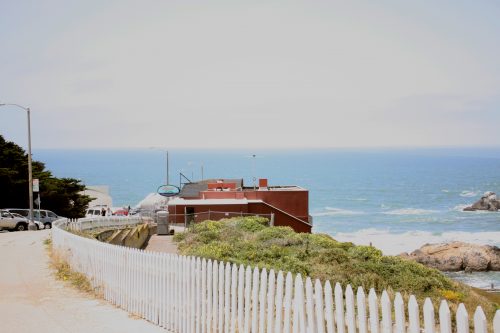
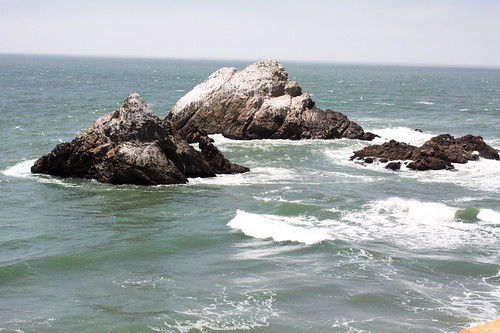
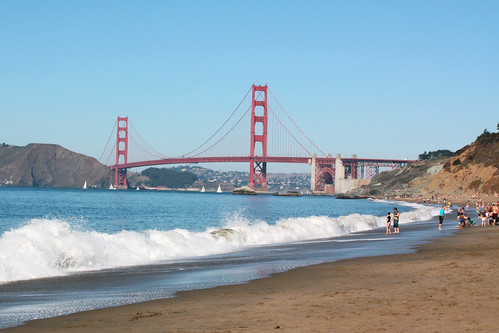
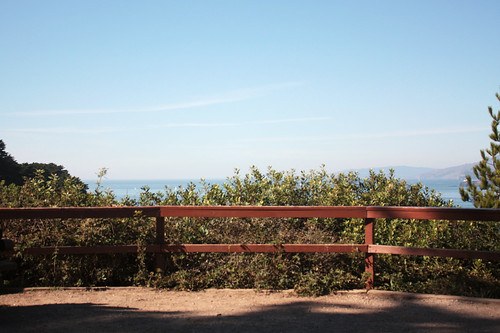


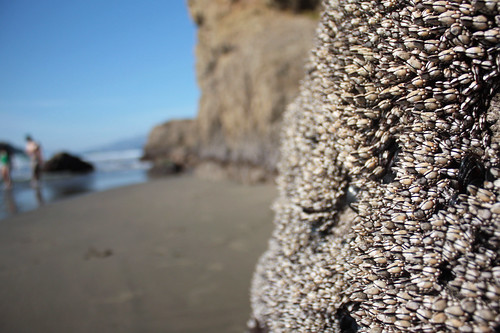
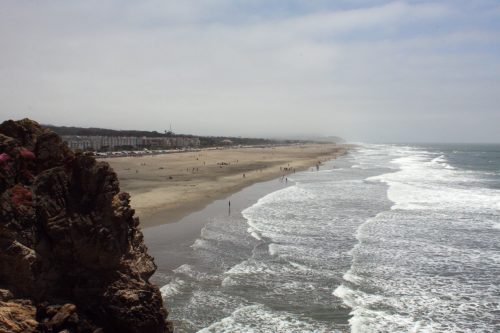
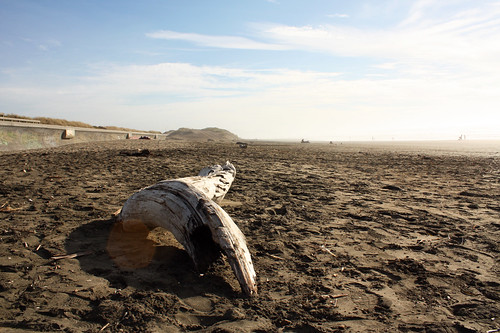
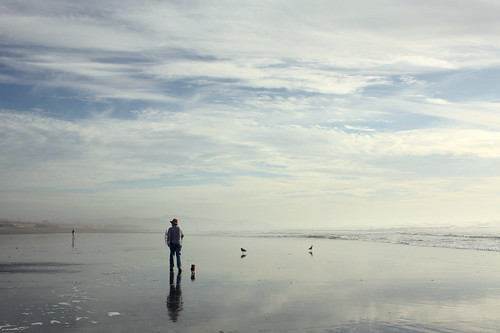
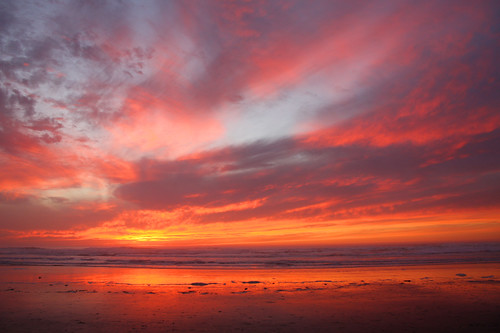

On Foot: Afternoon at the San Francisco Zoo and Sunset at Ocean Beach | Far Out City
[…] Reliving 1940s San Francisco at Lands End and Ocean Beach […]
11/9/2011 at 2:05 pm
On Foot: A Treasure Island Adventure -- lawn games, wine tasting, and Red's Java House | Far Out City
[…] Reliving 1940's San Francisco at Lands End and Ocean Beach […]
2/3/2012 at 5:21 pm